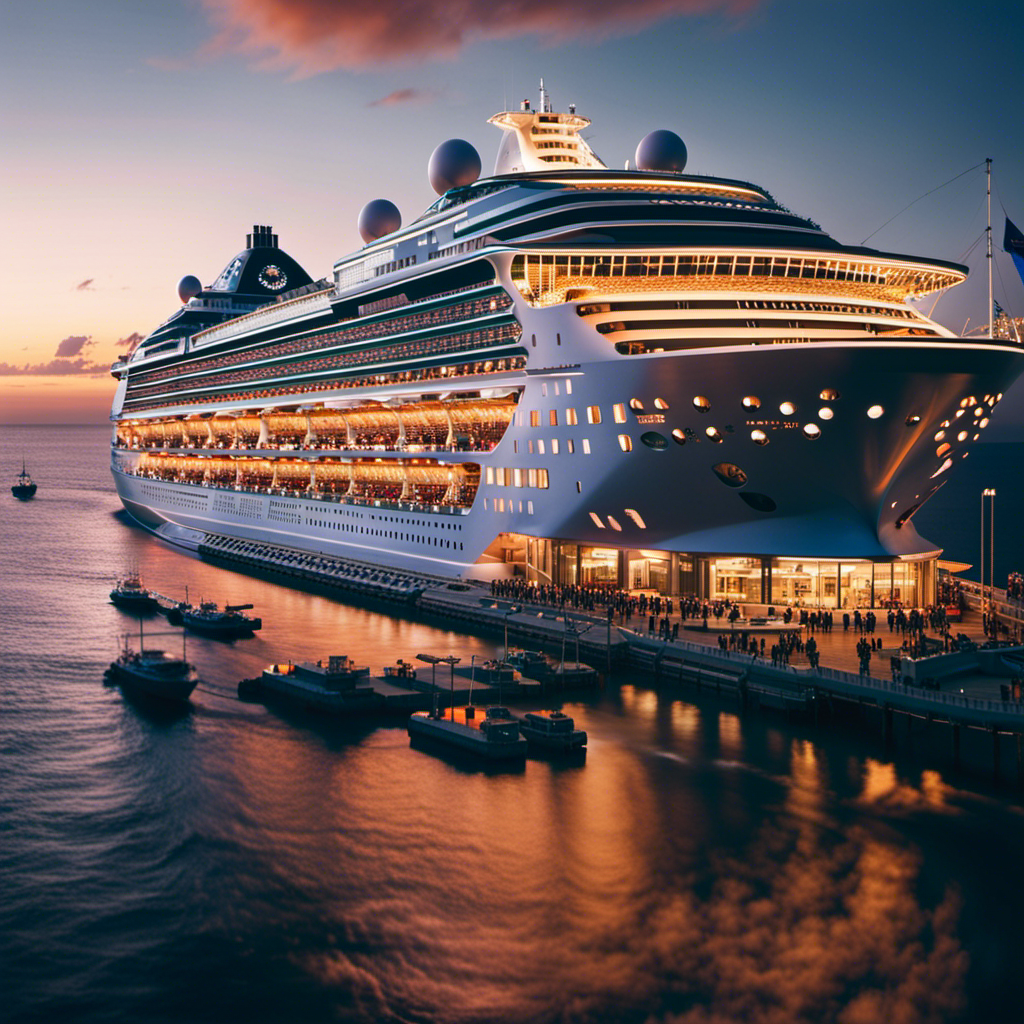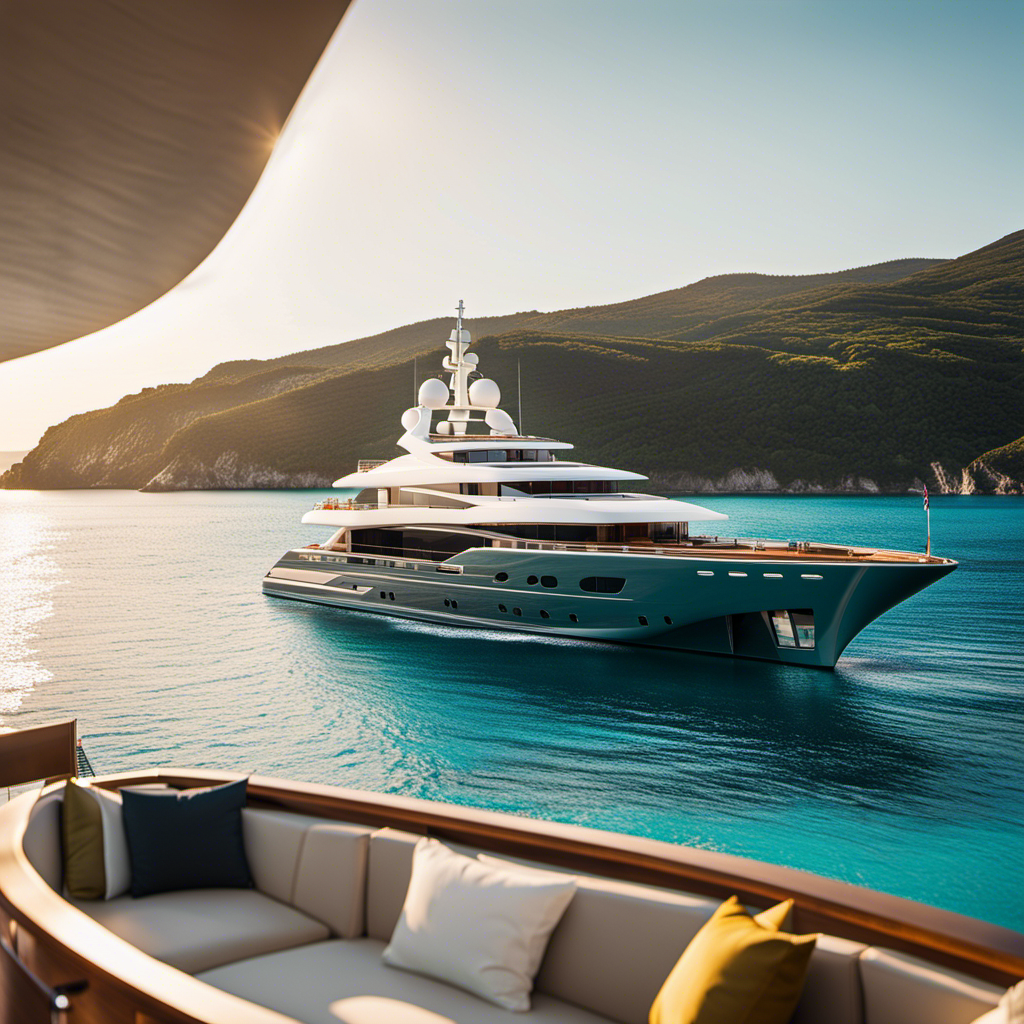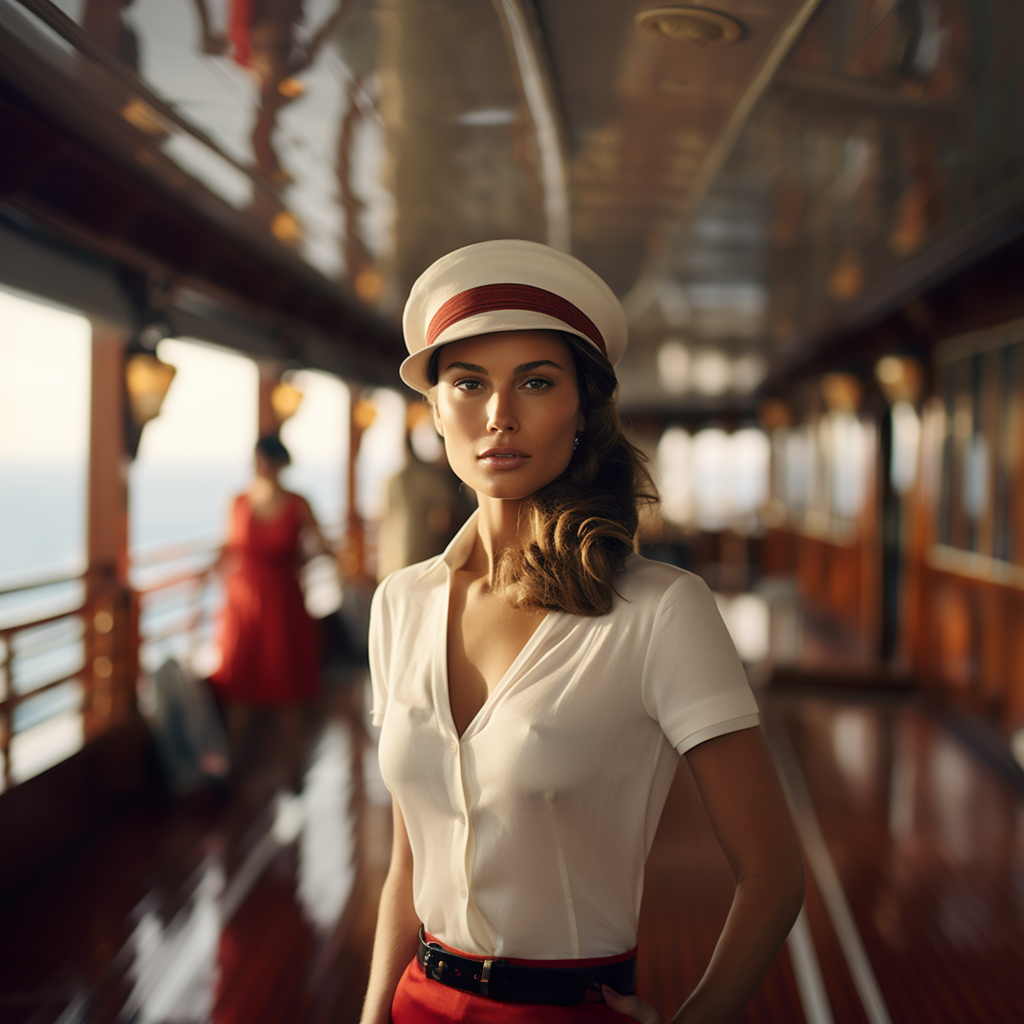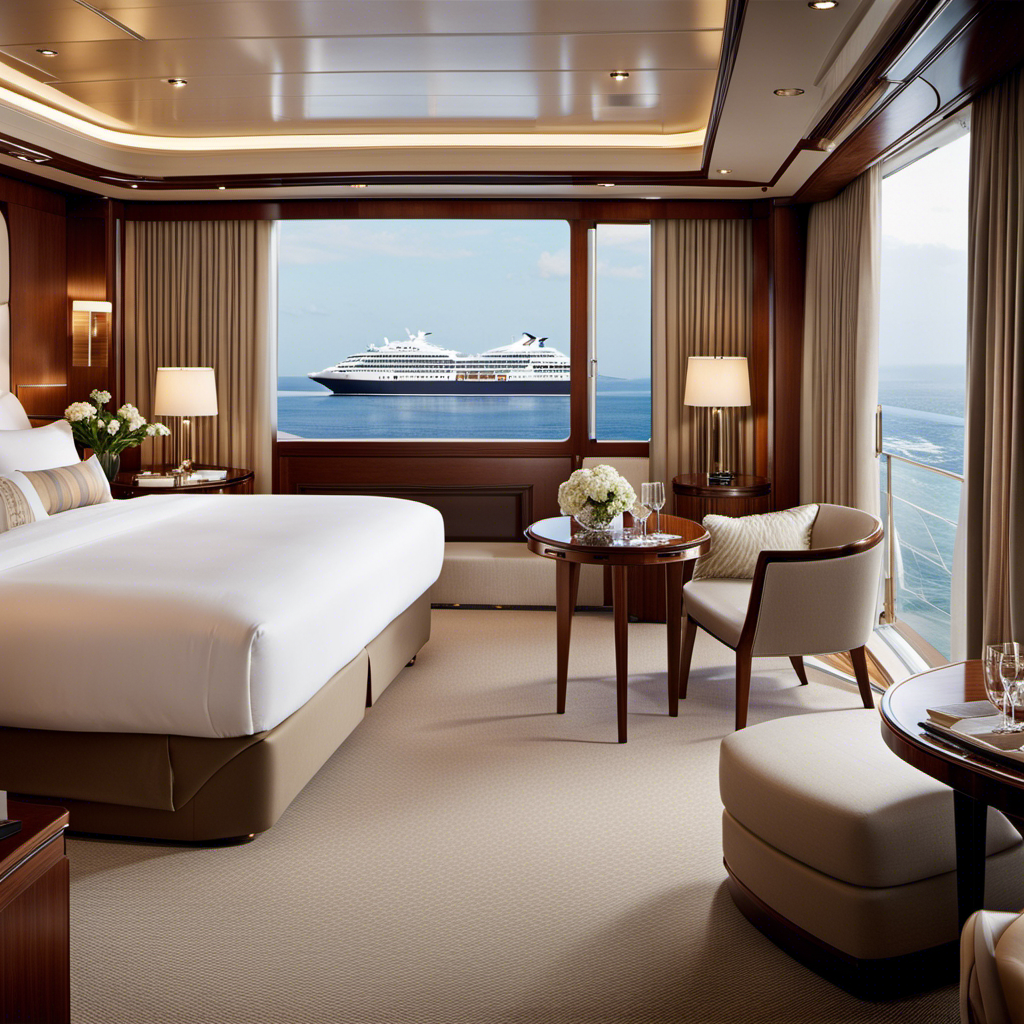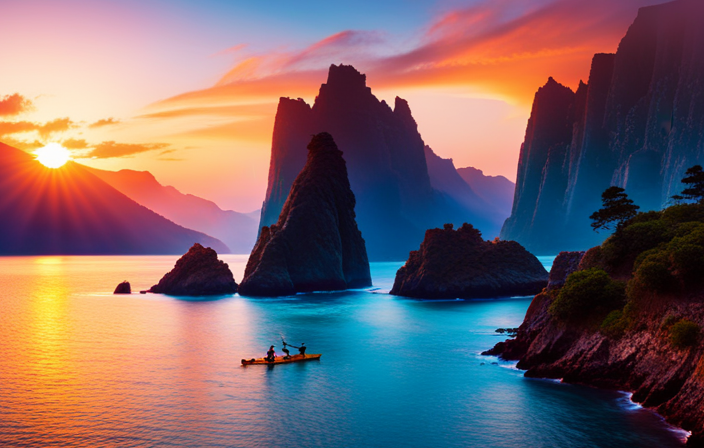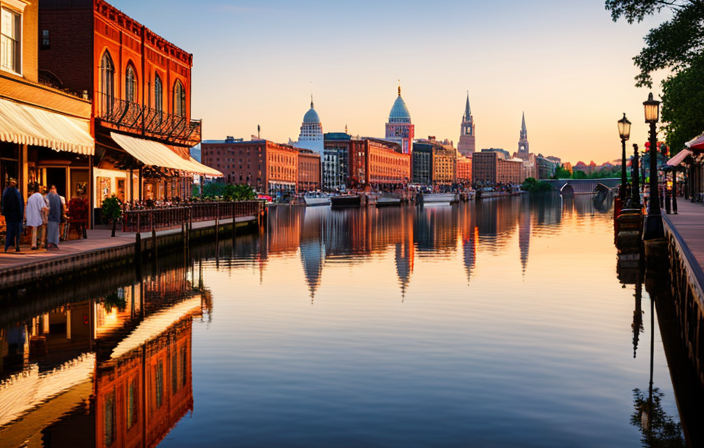As someone who loves cruises, the mysteries hidden within these sea-bound cities have always fascinated me.
From the jaw-dropping size and astonishing cost of these vessels to the staggering amount of food consumed onboard, there’s a whole world to explore beneath the surface.
Join me as we delve into the secrets of cruise ships, revealing the hidden areas, the dominance of three major cruise companies, and the international nature of these majestic vessels.
Get ready to uncover the size, cost, food, and more that make these cruise ships truly remarkable.
Key Takeaways
- Cruise ships often sail above 100% occupancy, with families and larger cabins contributing to higher rates.
- The average size of new cruise ships has doubled since the 1990s, with ships built from 2015 to 2021 having an average gross tonnage of 164,000.
- The cost of a new cruise ship can exceed $1 billion, and refurbishing an older ship can cost between $100 and $150 million.
- Three large companies, Carnival Corporation, Royal Caribbean Group, and Norwegian Cruise Line Holdings, dominate the cruise industry, owning multiple cruise lines.
Occupancy and Size of Cruise Ships
I can’t believe cruise ships can sail above 100% occupancy and that Royal Caribbean Group had a yearly occupancy of 108.1% in 2019.
It’s fascinating how cruise ship design has evolved over the years. Future trends in cruise ship size indicate that ships are getting bigger, but there are logistical limitations to consider. The average size of new cruise ships has doubled since the 1990s, with ships built from 2015 to 2021 having an average gross tonnage of 164,000.
However, the largest cruise ships reached their peak in 2009, with Oasis of the Seas being the upper limit for size. As ships get larger, there are challenges in terms of maneuverability, port infrastructure, and passenger experience.
It will be interesting to see how cruise ship design continues to evolve in the future.
Cost of Cruise Ships
Refurbishing an older ship can incur costs ranging from $100 to $150 million. When it comes to cruise ship construction, the cost of building a new ship can exceed $1 billion. However, refurbishing older ships can be a more cost-effective option for cruise lines.
The economic impact of cruise ships is significant, as they serve as floating resorts and contribute to local economies through tourism and job creation. The cost of cruise ships is recouped over the ship’s lifetime, as passengers don’t have to pay a fortune to sail.
These ships are like five-star resorts, with high-end dining options and luxurious suites. Additionally, the food consumption on cruise ships is staggering, with large quantities of bacon, lobster tails, eggs, and baked potatoes being consumed each week.
Overall, the construction and operation of cruise ships have a substantial economic impact and play a vital role in the tourism industry.
Food Consumption on Cruise Ships
Passengers aboard cruise ships consume an astonishing amount of bacon, along with other delectable foods like lobster tails, eggs, and baked potatoes. The sheer quantity of food consumed on these ships is mind-boggling.
To cater to the appetites of over 6,000 passengers, cruise ships have a large culinary staff that faces numerous challenges. Feeding such a large number of people is a massive logistical task that requires careful planning and organization. The culinary staff must ensure menu diversity to cater to the diverse tastes and dietary preferences of the passengers.
From accommodating different dietary restrictions to providing a wide range of international cuisines, the culinary staff plays a crucial role in ensuring that passengers have a memorable dining experience onboard.
Dominance of Three Cruise Companies
Royal Caribbean Group, Carnival Corporation, and Norwegian Cruise Line Holdings are the three major companies that dominate the cruise industry. These companies control a significant portion of the cruise line market share and face fierce competition from each other.
Each company owns multiple cruise lines, allowing them to offer a variety of experiences to cater to different types of travelers. Carnival Corporation, for example, owns popular cruise lines like Carnival Cruise Line, Princess Cruises, and Holland America Line. Royal Caribbean Group owns Royal Caribbean International, Celebrity Cruises, and Silversea Cruises. Norwegian Cruise Line Holdings owns Norwegian Cruise Line, Regent Seven Seas Cruises, and Oceania Cruises.
With their extensive fleets and diverse offerings, these companies continue to compete for the attention and loyalty of cruise enthusiasts worldwide.
Foreign-Flagged Cruise Ships
Managing the logistics of operating foreign-flagged cruise ships can be a complex task due to the need to navigate labor costs and flagging requirements. However, the advantages of flagging a ship in a foreign country can lead to significant labor cost savings.
Here are three key benefits:
-
Access to less expensive labor pools: Foreign-flagged vessels have the ability to hire from countries with lower labor costs, reducing overall expenses for the cruise line.
-
Flagging in areas friendly to their needs: By choosing a flag of convenience, cruise lines can register their ships in countries with favorable regulations and taxation, further decreasing expenses.
-
Cost savings for crew members: With lower labor costs, cruise lines can offer competitive wages to crew members, attracting a skilled workforce while keeping expenses in check.
Speed and Logistics of Cruise Ships
Navigating the logistics of operating a cruise ship is a complex task that requires careful planning and coordination. As someone who has worked in the cruise industry, I can attest to the immense effort it takes to ensure a smooth sailing experience for passengers.
One aspect that requires attention is cruise ship entertainment. From Broadway-style shows to live music performances, cruise ships offer a wide range of entertainment options to keep guests entertained throughout their voyage.
Additionally, the environmental impact of cruise ships is a growing concern. Cruise lines are making efforts to reduce their carbon footprint by implementing technologies like scrubbers to minimize air pollution and wastewater treatment systems to protect marine ecosystems.
It’s important for the industry to continue exploring sustainable practices to mitigate the environmental impact of cruise ships while still providing a memorable experience for passengers.
International Nature of Cruise Ships
As an industry insider, I can attest to the international nature of cruise ships. Many ships are registered in foreign countries to take advantage of cost savings and labor pools. This practice of flagging ships in foreign countries is common in the industry.
Here are some key points about the international nature of cruise ships:
-
Flagging practices: Nearly all cruise ships are flagged in foreign countries, allowing them to benefit from lower crew costs and other cost-saving measures.
-
Employment on cruise ships: The international nature of cruise ships means that employment opportunities are available to people from various countries. Crew members come from diverse backgrounds, contributing to the multicultural environment onboard.
-
Labor pools: By registering ships in areas with less expensive labor pools, cruise lines can reduce their operating costs and remain competitive in the industry.
-
Exception: Norwegian Cruise Line’s Pride of America is an exception, being U.S.-flagged, which allows it to operate exclusively within the United States.
The international nature of cruise ships not only impacts the flagging practices but also creates a diverse and vibrant workforce onboard.
Hidden Areas and Surveillance on Cruise Ships
Walking through the hallways of a cruise ship, I am always aware of the cameras recording my every move. Cruise ship security is a top priority for the industry, and surveillance plays a crucial role in ensuring the safety of passengers and crew. However, this level of surveillance raises privacy concerns on cruise ships.
Cameras are located throughout the ship, including hallways and public areas, to aid in safety and health crisis management. While this surveillance helps with contact tracing in case of virus cases on the ship, it also means that passengers can expect to be recorded in public areas.
It’s important for cruise lines to strike a balance between security and privacy to ensure a positive and safe experience for all onboard.
Frequently Asked Questions
What Are Some Popular Destinations for Cruise Ships?
Popular cruise ship destinations include the Caribbean, Mediterranean, Alaska, and the Bahamas. The best time to go on a cruise ship varies depending on the region, but generally, summer months are popular for cruising.
How Do Cruise Ships Handle Waste Disposal?
Cruise ship waste management is a crucial aspect of environmental sustainability. From onboard recycling programs to advanced waste treatment systems, cruise lines prioritize minimizing their impact on the environment and ensuring responsible waste disposal practices.
What Are Some Common Amenities Available on Cruise Ships?
On cruise ships, common amenities include pools, spas, restaurants, theaters, casinos, and fitness centers. These facilities provide entertainment, relaxation, and dining options for passengers to enjoy during their voyage.
Are There Any Age Restrictions for Passengers on Cruise Ships?
Age restrictions and policies on cruise ships vary by cruise line. Safety measures are in place to ensure a family-friendly environment. Activities and entertainment cater to all ages, with dedicated kid-friendly zones available on most ships.
How Do Cruise Ships Handle Medical Emergencies on Board?
When medical emergencies happen on cruise ships, the cruise ship medical staff is trained to respond quickly and efficiently. They follow emergency response protocols to provide necessary medical care and, if needed, arrange for evacuation to a nearby medical facility.
Meet Asra, a talented and adventurous writer who infuses her passion for exploration into every word she writes. Asra’s love for storytelling and her insatiable curiosity about the world make her an invaluable asset to the Voyager Info team.
From a young age, Asra was drawn to the power of words and their ability to transport readers to far-off lands and magical realms. Her fascination with travel and cultures from around the globe fueled her desire to become a travel writer, and she set out on a journey to turn her dreams into reality.

